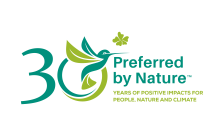Timber Risk Score: 43 / 100 in 2017. The Timber Legality Risk Assessment contains an evaluation of the risk of illegality in Turkey for five categories and 21 sub-categories of law. We found:
- Specified risk for 11 sub-categories.
- Low risk for 6 sub-categories.
- No legal requirements for 4 sub-categories.
This page provides an overview of the legality risks related to timber produced in Turkey.
Around 15% (11.6 million ha) of Turkey is covered by forests, of which
- About 8% is primary forest
- About 63% is naturally regenerated forest
- About 29% is planted forest.
Roundwood production totalled 24.6 million m3 in 2015, and the forestry sector contributed US$ 5.6 billion to the country’s economy in 2011, which is about 0.8% of its GDP.
Several legality risks are present in timber supply chains from Turkey. The risks relate to legal rights to harvest, timber harvesting activities and third parties’ rights. If you are sourcing timber from Turkey you should take care to ensure the risks identified are not present in your supply chains, or have been sufficiently mitigated.
This risk assessment was prepared between 2016-2018 according to the FSC-STD-40-005. The approved FSC Risk Assessment can be downloaded in the FSC Document Centre. ONLY Risk Assessments that have been formally reviewed and approved by FSC can be used by an FSC candidate or certified companies in risk assessments and will meet the FSC standards without further verification.
Score: 38 / 100 in 2021
Rank: 96 out of 180 countries in 2021
Conflict between Turkey and armed Kurdish groups according to the Council on Foreign Relations' Global Conflict Tracker.
According to the Uppsala Conflict Data Program there were 5203 deaths from 2010-2019.
FSC Certified Forest Area: 4,295,815 hectares (4 December 2019).
Information Gathering
Timber sources
| Timber source | Description of timber source |
|---|---|
|
Natural Production Forests |
Harvesting Contract (for contracted registered companies to harvest standing trees in state forest), Harvesting permit (for contracted privates, coops) and Forest Management plans which conforms to the national forest policy and program are required. |
|
Plantation Production forest |
State owed plantation forest. A Harvesting Permit and Forest Management plans is required. |
| Timber from private farm land | No harvesting permit/contract is required. In Private farm land plantations, the seedlings of poplar tree (I-214 Clone of Populus Canadiensis)) are planted on farm lands for about 15 years. Following, the site may be converted to crop production. The purpose of such a farm land plantation is the source of commercial timber. |
| Other limited sources rarely entering the commercial timber supply chain |
Degraded forest - Limited source of timber. Managed for recovering purposes, Firewood production takes place. Harvesting Permit and Management plan with recovery function (not typical production function) are required. Natural/Plantation Protection forest - Limited source of timber. Only allowed for forest managing purpose. Harvesting Permit and Forest Management plan is required. Natural Protected forest - Limited source of timber. Only allowed for forest managing purpose. Harvesting Permit and Forest Management plan is required. |
Risk Assessment
Risk assessment summary
|
|
Legal rights to harvest • Risk of unclear or incorrect land demarcation for private forests, especially when bordering state forest areas. |
|
|
Taxes and fees • Risk of VAT evasion |
|
|
Timber harvesting activities • Risk that harvesting requirements are violated due to lack of training of staff |
|
|
Third parties' rights • Risk that third parties rights are violated |
|
|
Trade and transport • Risk that firewood sold at the commercial market without proper documentation is illegally felled. |
Risk Mitigation
Mitigate the risks in your supply chain
Learn which actions we recommended to mitigate the risks associated with the timber sources from Turkey.
Source Certified Materials
NEPCon believes that third party certification (for example FSC certification) can provide strong assurances of the legality of the products they cover. Companies seeking to mitigate the risks of sourcing illegal timber should seek to purchase third party certified materials wherever possible.
While the European Timber Regulation does not include an automatic “green lane” for certified products, it does recognise the value of certification as a tool for risk assessment and mitigation. The European Commission says that companies “may rate credibly certified products as having negligible risk of being illegal, i.e. suitable for placing on the market with no further risk mitigation measures, provided that the rest of the information gathered and the replies to the risk assessment questions do not contradict such a conclusion.”
For more information on using certified materials in your due diligence, including how to assess whether a certification system meets EUTR requirements, see the page on Certification and Due Diligence.
Mitigation recommendations
Below is a summary of our recommended actions to mitigate the risks associated with timber sources from Turkey.
1. Fully map your supply chain
- Our supply chain mapping tool can help you do this.
2. Obtain and verify documents
Forest level documents
- Land title confirms rights to the land
- Land registry confirms ownership of private forests
- Maps show harvesting areas and limits (in compliance with the harvesting plan)
- Harvesting permits
- Tax related documents
- Receipts for payment of harvesting fees and sales taxes.
- Volumes, species and qualities given in sales and transport documents match the fees paid
- Sales documents include applicable sales taxes
- Written sales contracts from the farm land plantation owner or the buyer
Health and safety related documents
- Training records of chief forester and people working in the forest (Training Certificate of Chief Foresters)
- Environmental and/or Social Impact Assessments
- Training document stating that the worker has received training in health and safety
- Copy of harvesting file with the list of workers, as well as the document with signature to show that safety equipment is being provided and used
Employment related documents
- Employment contracts
- Persons involved in harvesting activities shall be covered by obligatory insurances
- Certificates of competence for forest workers
- Compare Health and Safety document (signed by all workers) with the list of registered workers in the social security database
Trade and transport documents
- Transport documents that are clearly linked to the specific material in question
3. Consult stakeholders
- Stakeholders confirm that the forest management plan has been approved according to legally prescribed process
- Relevant Forest Village Development Cooperatives confirm information on harvesting statistics, volume, species (for state forest only)
- Financial authorities confirm that all required income and profit taxes have been paid
- Staff and contractors confirm that legally required protection equipment is required and provided
- Staff confirm that the minimum age is observed for all personnel involved in harvesting activities
- Staff confirm that forced or compulsory labour is not used
- Forest villagers confirm that customary rights are observed during harvesting activities
4. Carry out on-site verification
- Confirm that contractors have a Timber Extraction Contract
- Confirm that:
- Harvesting are conducted within the authorized boundaries of the FMU.
- tree species or selected trees found within the FMU for which felling is prohibited are listed in operational plans.
- harvesting restrictions are observed in the field.
- tree species or selected trees found within the FMU for which felling is prohibited are marked in the field
- Environmental restrictions are followed in the field, such as requirements related to soil damage, retention trees, seasonal restrictions etc.
- all safety and health regulations are followed and all required safety equipment are used.
- Labour unions can be asked to confirm legal employment
5. Conduct targeted timber testing
- Conduct timber testing on samples of purchased material to verify the species or origin of timber, where appropriate













